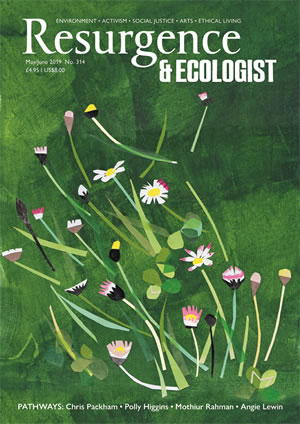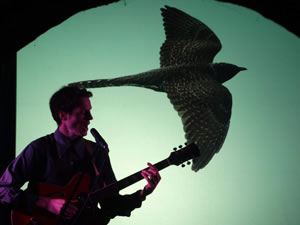This story begins sometime back in the mid-1990s when April came and went and I didn’t hear the voice of the cuckoo from my office window in the Rising Sun Country Park, in Newcastle upon Tyne, UK. It was a voice that had been there every year since I had started working in North Tyneside in 1983. A hole appeared in the world where the cuckoo song had once been. A hole that gradually expanded as the voices of other familiar birds – the wood warbler, the yellowhammer, the spotted flycatcher, the turtle dove – also began to fall silent, seemingly largely unnoticed by the wider world. Then, in the early 2000s I visited a primary school on the estate just near to where the cuckoo used to sing, and I played a recording of a cuckoo’s voice to a group of wide-eyed children sitting cross-legged on the floor. I was taken aback when hardly a child recognised the song and many didn’t know what a cuckoo was. Unthinkable in my childhood – I realised then how quickly the once familiar can be lost from our cultural memory.
I decided to create a performance piece about the cuckoo that both celebrated the bird and highlighted its plight. The cuckoo is, after all, a bird that is immediately recognisable in its call and one that has likely been woven into our identity as humans since we first walked the Earth.
Indeed, there cannot be a bird (except perhaps the nightingale) that features in more songs, stories and poems across the northern hemisphere than the cuckoo. It is an important character in tales from Ireland to Japan, where it has variously brought Jack a gift from Africa, been born from an old man’s pipe, and been caged to keep the summer. It appears in the 13th-century English round ‘Sumer Is Icumen In’ and has been put into verse by Ted Hughes, William Wordsworth, John Clare and many others. It is an essential part of our folklore: it brings the spring, tells us when to plant our seeds, lets us know how many children we will have, and informs us of how long we have to live. It is a bird that is embedded in the human imagination, it is a very part of who we are, yet we are watching its disappearance from the English countryside with only the faintest murmurings of concern.
An organisation that has shown concern for the plight of the cuckoo is the British Trust for Ornithology (BTO), which in 2011 developed an inspirational project, tracking the birds on their migration from Britain to sub-Saharan Africa. The aim was to discover where they go, the routes they take, and where they encounter trouble. People are invited to sponsor these satellite-tagged birds, which can then be followed online as they make their extraordinary journeys. I sponsored one and found myself identifying with my bird and willing it on as if it were a part of myself, which in a sense of course it was. This cyber-journey became the obvious backbone to my cuckoo story, and it was clear I needed to be involved with one bird from the beginning to the end of its journey.
The BTO were interested in working with artists to communicate ecological stories and had already got together a team of visual artists to represent migrant birds in their sub-Saharan locations, so they were open to the idea of other artistic intervention. Oral storytelling was much more of an unknown, but willing to give it a try they teamed me up with a group of BTO scientists who were satellite-tagging birds on the wild land surrounding Fylingdales Early Warning Station on the North York Moors.
I remember arriving at Fylingdales in the 3 o’clock darkness of a May morning and having to show our passports before being allowed onto the military site. We were driven out onto the moor surrounding the base, and there under the shadow of a great monolith, with its mighty discs pointing to the heavens receiving messages of possible nuclear attack, we set our nets to catch a cuckoo. The man who facilitated it all was northerner Mick Carroll, an ex-RAF man and fearless bird conservationist with a huge presence undiminished by the incurable cancer that was gradually sapping the life out of his body. It was he who released the trapped, satellite-tagged cuckoo, as if he were releasing his own spirit, which in a way he was, for he never lived to see it return. When the bird arrived back on the moor the following April, I imagined it singing over the very place Mick had released it.
I remember thinking that it would not get far on its journey, as it stumbled in the sky after leaving his hands, a long aerial protruding between its wings. On 24 June, however, I logged in to my laptop and saw a green line traced between Fylingdales and a forest in the South of France, where the bird lingered for a while, fuelling up on caterpillars. He now had a name, Vigilamus, given by Mick. Vigilamus continued over the Mediterranean to Libya, and then across the Sahara Desert, flying for three days and nights at an altitude of 5km, until he reached Southern Chad. Here he recuperated for a couple of months before flying on to the Congo Basin, arriving at his destination in mid-October. At each stage of Vigilamus’s journey I found myself vicariously experiencing the extraordinary sights he saw and facing the hazards that I imagined he faced: the drought in the South of France, the mass trapping of migrant birds on the Mediterranean islands, more netting on the coast of North Africa, the rigours of a 2,000-mile journey over an expanding Sahara, deforestation and the search for suitable habitats in Central Africa. And then finally returning to the farmed deserts of Britain and Northern Europe, where insect populations have crashed. That is leaving aside the hawks and eagles looking for a morsel of cuckoo flesh.
So here was a story that could be told. A story that I decided to tell as ‘I’ cuckoo, to bring us humans, as a close as we are able, to the experience of being bird. A story, also, that in its very essence is full of rhythm and passion, a story that invited music to travel with the words. And this is where my son, Joshua, came in, creating a musical journey both to accompany the words and to evoke the journey in its own right. The music gave a sense of the cultures and environments the cuckoo visited that complemented the oral storytelling. It was now a story, not just told, but sung, chanted and ringing with thumb piano, guitar and percussion.
But a cuckoo is much more than its migration. It provokes both outrage and awe, it is loved and judged, and it has given rise to words like cuckold, cucking stool and ‘going cuckoo’. So, as a counterpoint to the physical journey, we wove in the metaphorical: the myths, the folktales, the folksongs, the lore. Narratives that echo the places and cultures from which they arise and explore what it is to be human in relation to a bird and what it is to be bird in relation to a human. Tales and songs that evoke our essential beings and connection with one another. For as much as we may see a cuckoo bird as ‘other’, it is also a part of us – a living creature evolved from the same stardust and a vital expression of what it means to be alive on this planet. Through these tales our futures are interlinked and interdependent.
The other part of the journey is the personal story. The story of my participating in the capture of the cuckoo and my moral dilemma over harnessing a wild creature so that we can vicariously live its journey. But possibly the biggest dilemma in making a story such as this is how to tell a tale that has an underlying theme of loss by human action. And how to do this without avoiding the issue for fear of being preachy or leading people to head for the door with yet another tale of doom.
A billion birds migrate from south of the Sahara to Europe and back each year. There are warblers, flycatchers, pipits, chats, nightingales, nightjars, waders, ducks, hawks, swallows, martins, swifts, and many more. Each one a puff of feathers high in the sky undertaking a journey it has to make. They bring us the spring, colour, songs and life. They are like the Earth’s breathing, keeping it alive, keeping us alive. If through telling the story in words and music we can enable people to feel a little more a part of this wonder, then this is all we can hope.
A version of this article has appeared in Biodiversity Journal. You can see Gone Cuckoo performed at our Summer Camp. www.resurgence.org/summercamp







